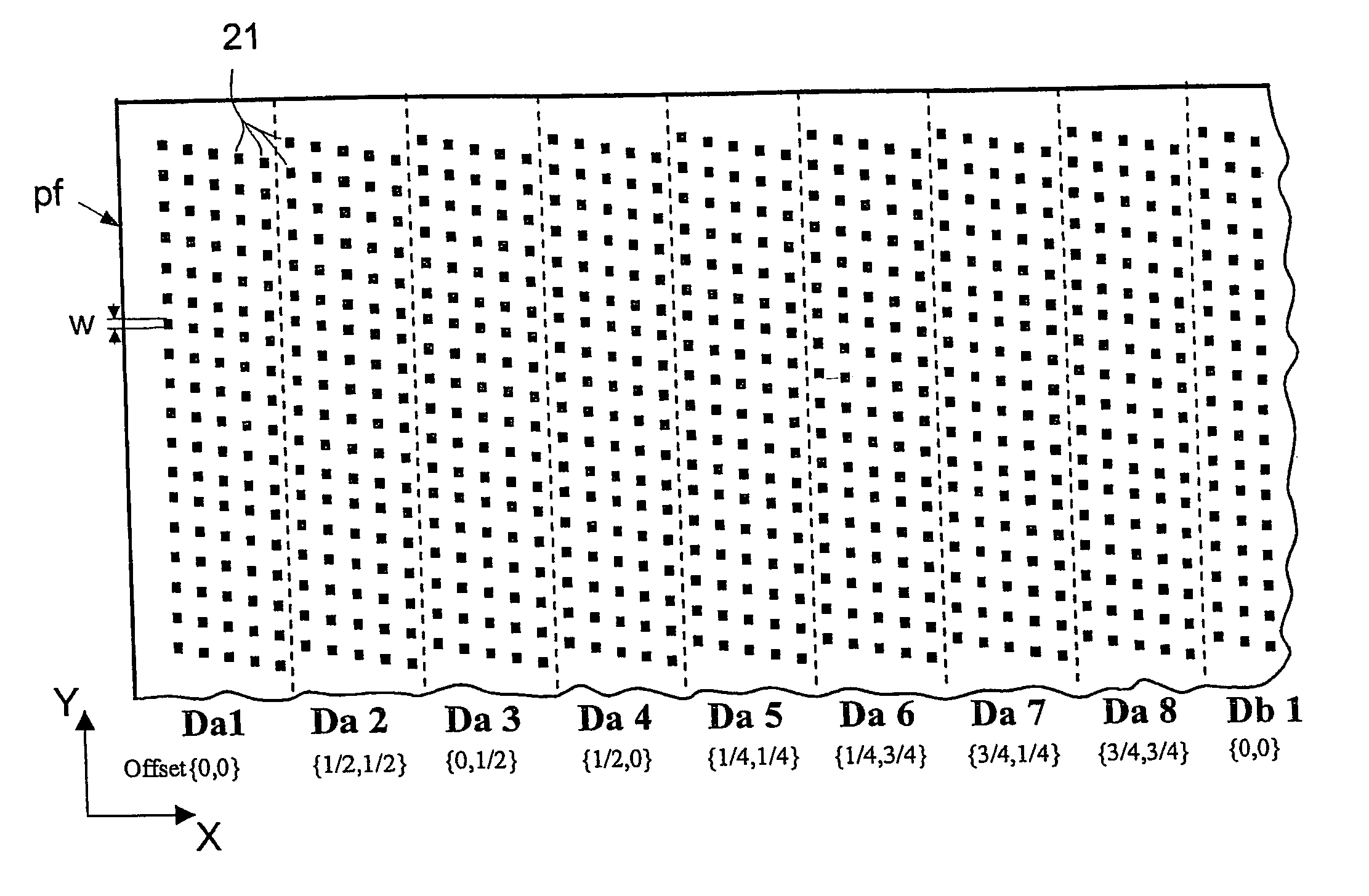Advanced pattern definition for particle-beam processing
a technology of advanced pattern definition and particle beam, applied in the direction of beam deviation/focusing by electric/magnetic means, treatment, diaphragm/collimeter handling, etc., can solve the problem of insufficient number of gray scale levels achieved in single pass exposures, prone to unwanted disturbing effects, and complex internal structure, etc. problem, to achieve the effect of reducing line edge roughness, improving resolution and avoiding interferen
- Summary
- Abstract
- Description
- Claims
- Application Information
AI Technical Summary
Benefits of technology
Problems solved by technology
Method used
Image
Examples
Embodiment Construction
Pattern Definition System
[0049] The preferred embodiments of the invention discussed in the following are based on the pattern definition (PD) system disclosed in the U.S. Pat. No. 6,768,125, used in a ion-beam processing apparatus. In the following, the technical background of the PD system, as far as relevant to the invention, is first discussed with reference to FIGS. 1 to 5 (which correspond, with modifications where appropriate, those of the U.S. Pat. No. 6,768,125), then embodiments of the invention in the PD system are discussed. It should be appreciated that the invention is not restricted to the following embodiments, which merely represent some of the possible implementations of the invention.
[0050] An overview of a processing apparatus employing the preferred embodiment of the invention is shown in FIG. 1. In the following, only those details are given as needed to disclose the invention; for the sake of clarity, the components are not shown to size in FIG. 1. The main...
PUM
| Property | Measurement | Unit |
|---|---|---|
| side length | aaaaa | aaaaa |
| size | aaaaa | aaaaa |
| size | aaaaa | aaaaa |
Abstract
Description
Claims
Application Information
 Login to View More
Login to View More - R&D
- Intellectual Property
- Life Sciences
- Materials
- Tech Scout
- Unparalleled Data Quality
- Higher Quality Content
- 60% Fewer Hallucinations
Browse by: Latest US Patents, China's latest patents, Technical Efficacy Thesaurus, Application Domain, Technology Topic, Popular Technical Reports.
© 2025 PatSnap. All rights reserved.Legal|Privacy policy|Modern Slavery Act Transparency Statement|Sitemap|About US| Contact US: help@patsnap.com



